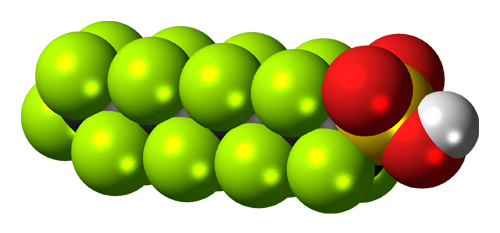
Treats PFAS and Protects
Community Resources


the ‘forever chemicals’?

Featuring SourceStop™

Colloidal Activated Carbon
Works As An In-Situ Treatment
Solution for PFAS

International Airport: Fate and
Transport of PFAS and the
Use of Colloidal Activated
Carbon
Browse Resources by Category

Background
The Problem With PFAS
PFOA and PFOS are the two most commonly encountered examples of Per- and Polyfluoroalkyl Substances (PFAS). PFOA and PFOS are abbreviations for the chemicals “perfluorooctanoic acid” (PFOA) and “perfluorooctanesulfonic acid” (PFOS). While government regulations have been passed to eliminate the use of these contaminants in manufacturing and other business practices due to the health risks they pose, these compounds are recalcitrant – or in layperson’s terms, not readily degradable – and as a result are ubiquitous in the environment.
Historically, PFAS compounds were used in various industrial activities and were components in many industrial and consumer products because they exhibit many useful properties. As the United States EPA has indicated in their research findings, they are resistant to heat, water, and oil, and also resist degradation in the environment. You may be familiar with technologies such as Teflon, Goretex, and firefighting foams, which have PFAS compounds incorporated. From clothing to cooking – many have used products containing PFAS in their day-to-day activities.
These chemicals are of concern because they have now been detected in groundwater, drinking water, and soils in many of our local communities. This creates a potential exposure pathway to humans and possible health risks. REGENESIS® is the global leader in the research, development and commercialization of technology-based solutions for the environment, including PFAS remediation.
Featuring SourceStop™
PFAS Source Zone Treatment
Achieve rapid and effective immobilization of PFAS in source areas, to prevent further contaminant movement into groundwater and drive enhanced natural attenuation of the plume. Protect downgradient receptors and avoid ongoing and uncertain costs with this highly flexible in situ solution.
Treatment Mechanisms
- Leachability reduction
- Infiltration prevention
- Creation of subsurface filter within vadose zone
- Sorption and retardation of PFAS in groundwater and capillary fringe

Featured Content
Additional Resources
eBook
8 Reasons to Consider Colloidal Activated Carbon
to Treat PFAS Contaminated Military Sites
This eBook outlines 8 reasons to consider colloidal activated carbon to treat PFAS contaminated military sites. The most prevalent method to treat PFAS is an ex situ pump and treat system with activated carbon filters. But this process is challenged by the wide-area and dilute nature of PFAS plumes. Additionally, pump and treat system’s high operating costs can make it impractical for organizations operating within lightly controlled budgets. Recognizing these challenges, REGENESIS® offers an alternative to traditional remedial technologies, working with clients to apply PlumeStop®, a colloidal suspension of activated carbon particles milled down to 1-2 microns formulated to widely distribute in situ under low pressure.

Interested in learning more about PlumeStop and PFAS?
PlumeStop Technical Bulletin 5.1
Watch a video featuring REGENESIS Research and Development Director Kristen Thoreson on the remediation of PFAS
In Situ Containment of PFAS with PlumeStop® Liquid Activated Carbon™
How Innovative Techniques Are Mitigating Toxic Threats Surrounding the Global Community, about technologies to mitigate PFAS contamination
Poster presentation: Activated Carbon “Inks” for Treatment of PFOA/PFOS

 Americas
Americas Europe
Europe Français
Français Deutsch
Deutsch Italiano
Italiano Español
Español



